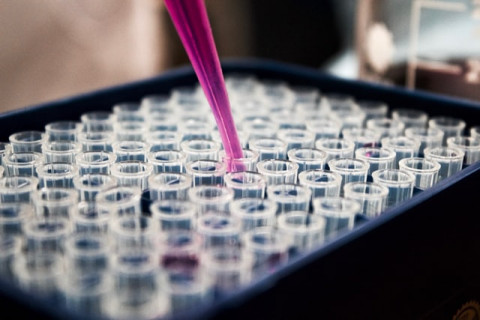
7 min
1
10.04.2022

Solutions and the dissolution process itself are of great importance in nature, in our life, science, and technology. Water from seas, rivers, ethanol, lakes, groundwater, drinking water is the solution. Air is a carbon dioxide solution. Solutions are used in industry: textile, metalworking, pharmaceuticals, plastics, synthetic fibers, soap, etc.
Solubility - What Is It?
Solubility is the ability of a substance to dissolve in one or another solvent. Solutions are called homogeneous multicomponent systems of variable composition. A solution always contains a solvent and a solute. A solvent is a component of a solution, which is in the same state of aggregation as the solution, and quantitatively prevails. In a solution of salt in water, the solvent is water. In medical alcohol, alcohol is a solvent, and water is a solute. The hydrogen atoms are a universal solvent for many substances. Good solvents are alcohol, acetone, gasoline, ethers.
Measure of Solubility
A measure of the solubility of a substance is its content in a saturated solution. If more than 10 g of a substance dissolves in 100 g of water, then such a substance is highly soluble—for example, sulfuric acid.
If less than 1 g of a substance dissolves, the substance is poorly soluble—for example, gypsum. A substance is considered practically insoluble if less than 0.01 g of a substance passes into the solution—for example, silver. There are no absolutely insoluble substances. Even when we pour water into a glass vessel, a minimal amount of glass particles inevitably goes into the solution.
How Are Different Substances Dissolved?
The solubility of various substances is due to many reasons. The solubility of most solids increases with temperature, while the solubility of gases, on the contrary, decreases. Pressure does not affect the solubility of solids. But an increase in pressure increases the solubility of gases.
Classification of Solutions
Solutions are classified according to various criteria. We will cover the most basic ones:
- According to the state of aggregation, solid solutions, liquid solutions, and gaseous solutions are isolated.
- The degree of dispersion or the size of the particles distributed in the solvent, coarse systems, and finely dispersed systems are distinguished. In coarsely dispersed systems, the substance is in small particles, and such systems are turbid, opaque, unstable in time. Such systems include suspensions and emulsions.
- By the amount of solute, solutions are diluted or concentrated. If there is a relatively small amount of a solute in a specific solution volume, the solution is diluted. If a lot of a substance is dissolved, then the solution is called concentrated. A solution in which a given substance no longer dissolves at a given temperature is called saturated. A solution in which this substance can still dissolve is called unsaturated.
Famous Examples of Solubility in Daily Life
Many solubilities can be found in everyday life. For example:
- Salt or sodium chloride - usually soluble in water at 20 ° C.
- Sugar usually dissolves in water molecules at 20 ° C.
- Gelatin - soluble in water in the presence of heat.
- Powdered juices are a mixture of sugar, flavorings, and preservatives, usually soluble in water at 20 ° C.
- Nitrates are commonly found in fertilizers used in agriculture.
- Alcohol - dissolves like ethyl and isopropyl.
- Wine is a mixture of alcohol and fermented fruits.
- Soap - since it contains carbon, hydrogen, and salt, it dissolves in contact with water.
- Ammonia - exists in a wide range of household chemicals.
- Oxygen - oxygen atom, dissolved in water, is essential for the aquatic world's inhabitants and other living things.
Solubility In Chemistry
Each substance has its own ability to dissolve, and it has a specific limit. Solubility depends on the solvent's nature and the solute, their state of aggregation, temperature, and pressure. Let's look at some of the most famous examples of solubility in chemistry.
What Happens To Ionic And Covalent Compounds When They Dissolve In Water?
A chemical compound is made up of many identical molecules formed from atoms of more than one chemically bonded element. However, not all connections are created equal. Different things happen to ionic and covalent compounds when they dissolve in water.
Ionic compounds are molecules composed of oppositely charged ions that have both negative charge and positive charge. Covalent compounds are non-metals bonded together, made up of two electrons shared between two atoms.
When ionic compounds dissolve in water, they break down into the ions they are made of through dissociation. When covalent compounds dissolve in water, they break down into molecules but not into individual atoms. Water has polar molecules, but covalent compounds are usually nonpolar. This means that covalent compounds typically do not dissolve in water but form a separate layer on the water's surface.
How Do Electrolytes In An Aqueous Solution Dissolve?
The formation of hydrates accompanies the dissolution of any substance in water. In this case, when interacting with a solvent, some substances decompose into ions (anions or cations electrons), while others can exist mainly in the form of molecules. Substances that decompose into ions in solutions or melts and therefore conduct electric current are called electrolytes.
Currently, two processes are distinguished in the dissolution of electrolytes in water: ionization and dissociation. The dissolution of strong electrolytes that have an ionic or heteropolar crystal structure and ions contained in the crystal lattice of the electrolyte pass into the solution is called dissociation. This process is irreversible.
The dissolution of weak electrolytes with a homeopolar bond that does not have free ions is called ionization since, in this case, ions are formed as a result of dissolution. The ionization process is reversible.
How Does The Solubility Of Polymers Occur?
The dissolution mechanism of polymers consists of separating chains from each other and their diffusion into the solvent phase. The flexibility of the chain facilitates this. A flexible chain can move in parts, and its links can exchange places with solvent molecules (for example, hydroxide). Its diffusion is carried out by the sequential movement of groups of links, which does not require significant energy consumption to overcome intermolecular interactions. Therefore, amorphous polymers with flexible chains, as a rule, swell indefinitely.
How Do Enzymes Dissolve?
Enzymes - protein molecules that accelerate catalytic processes in living systems - play a significant role in biotechnology development. Most of the enzymes are water-soluble. You can use the solution internally to improve food absorption, relieve the pancreas, reduce the heaviness in the stomach, and prevent gas formation in the intestines.
How to Prepare a Solution of Chemical Substance Yourself?
Let's take a look at the process of preparing an aqueous solution from a dry anhydrous reagent. First of all, decide what weight of solution you need. If this substance's solution is unstable or you need it for some one-time work, prepare as much solution as you need now. If the solution has a long shelf life, you can prepare it with a margin.
Now let's calculate the amount of substance that needs to be taken to prepare a certain mass of a solution of a particular concentration:
Example 1: Prepare a 5% sodium hydroxide (NaOH) solution weighing 500 grams.
NaOH mass = (5) * (500 g / 100) = 25 grams.
Mass of water = 475 grams.
It remains to dissolve the weighed portion of the dry reagent in the calculated volume of water. Similarly, you can dissolve NaCl, CaSO4, AgCl, and other substances.
Interesting Facts About Solutions
Surely you have seen a lot of solutions, but did not even know about some interesting facts:
- The water is rarely clean. It usually contains impurities of other substances. You can find out more about the properties of water and see for yourself. Therefore, water is a solution.
- Seawater is a solution containing a vast number of different solutes in low concentrations. Among them are table salt (sodium chloride) and magnesium chloride.
- If the saturated solution is cooled or left to evaporate, the solute will precipitate. The molecules of the precipitated substance often combine to form solid crystals and form other chemical reactions.
- A solution of brilliant green can suppress the growth of tendrils of strawberries and strawberries.
- If the saturated solution is heated, then an additional amount of solid can be dissolved in it.



